
- •192. IVanslate the following terminological combinations into Russian.
- •193. Put down the corresponding verb. Translate the words.
- •194. A) Read the following combinations. Translate them from Russian.
- •196. Which of the given words are verbs? adjectives?
- •Put down and translate the corresponding verbs.
- •A) Read the terminological combinations. IVanslate them from Russian.
- •Answer the following questions.
- •IVanslate the extract in writing. Use a dictionary if necessary.
- •Giw the Russian for:
- •204. Translate the following extract in writing. Use a dictionary if necessary-.
- •Read the examples given in the table.
- •How can one keep water away from the wall?
- •206. Read the following combinations. Translate them from Russian.
- •Put down the corresponding adjective.
- •Answer the following questions.
- •209. Read the terminological combinations. IVanslate them from Russian.
- •Choose and put down the proper attributes to the nouns given below.
- •212. Translate the examples into Russian.
- •213. Translate the following sentences in writing.
- •Master the head words.
- •215. Read the terminological combinations. IVanslate them from Russian.
- •A) Add prefix ле-; translate the words.
- •Distribute the words into three columns: nouns, adjectives, verbs.
- •A) Form the corresponding adjectives. IVanslate the words.
- •Choose the proper preposition and fill it in.
- •226. Choose and put down a) the English terms corresponding to the given b) Russian ones.
- •Give the English for:
- •227. A) Name the terminological combinations with the opposite meaning.
- •228. Read and translate the following questions.
- •Read the terminological combinations. Translate them from Russian.
- •Find the Russian terms b) corresponding to the English ones a).
- •Choose the English sentences b) corresponding to the given Russian ones a).
- •232. Put down a) the corresponding adjective; b) the corresponding verb.
- •233. A) Read the examples, ihinslatc them from Russian.
- •235. A) Read the given sentences. Try
- •234. Connect the English terminological combinations with the corresponding Russian ones.
- •Read the combinations. Translate them from Russian.
- •Give the Russian for:
- •Combine the given attributes a) with the nouns b) and form the English combinations corresponding to the given Russian ones c).
- •Read the following terminological combinations, Translate them from Russian.
- •Translate the following combinations.
- •243. Translate fhe following questions and answer them.
- •244. Translate the following extract. Mind the "small words".
- •245. Use the proper "small words". Translate the Russian words given in brackets into English. Fill in the necessary prepositions.
- •Wood has been used (как, в качестве) a construction
- •The Meanings of "One" • Значения местоимения "One"
- •246. Translate the following examples in writing.
- •247. Thinslatc the given participles in writing. Translate them hack Ггот Russian into English.
- •248. What is the meaning of the following constructions? Mind the Jhirticiples.
- •249. In the given examples the verb "to be" lias different meanings. What are they?
- •Формальные признаки сказуемого
- •Change the sentences into questions.
- •Put down the tense forms of the verbs.
- •Copy the following sentences. Underline the predicates (ones in the Passive Voice with two lines). IVanslate the sentences into Russian.
- •250. State tlie voice and the tense form of the following verbs.
- •254. Compare the English terms with the corresponding Russian ones. Mind the structural differences. Cover the left column. Translate the Russian terms back into English.
- •255. Connect (lie English termiiwlogiail combinations with the corresponding Russian ones.
- •256. Add the prefixes to the words. Translate the new words.
- •Read the terminological combinations. Translate them from Russian into English.
- •Choose the proper attributes (a) and form the English combinations (b) corresponding to the Russian ones (c).
- •IVanslate the following combinations into Russian.
- •A) Change the terminological word combinations according to the model.
- •261. Ihtnslate the extract given below in writing.
- •Attributive Word Combinations • Атрибутивные сочетания
- •262. Give the Russian equivalents of the following attributive combinations.
- •263. Ihmslate (he article. Mind the attributive complexes. Read the word combinations.
- •Hie Shanghai Newly-Built Stadium
- •264. Insert commas where necessary.
- •The below-ground part of a building.
- •A wood panel composed of a number of layers of wood veneer bonded together under pressure.
- •A framing member that runs up and down the slope of a pitched roof.
- •1. Fuel economy
- •3. Concrete (a bit of history)
- •4. Climatic and weather conditions
- •5. Cladding
- •6. Communication systems
- •7. Doors
- •8. Francois hennebique (1842-1921), reinforced concrete pioneer 1
- •23. Form the new words according to the model.
- •1Does wood as a structural material have only advantages? If not, what
- •Bone-shaped wires strengthen concrete
- •0 Finisher-аппретурщик finishing - отделка
- •Installations placed above the ceiling
6. Communication systems
Circuits that convey information or control other circuits are classified as communication systems. They are usually low voltage (commonly 12 to 24 V), in contrast to power systems, which start at 120 V. Communication systems include all types of signal systems - telephone, telegraph, and alarm. They also include remote control for power systems.
Alarm Systems. These systems cover security, fire detection and fire alarm. Fire-protective signaling systems are divided into non-power-lim- ited and power-limited. Of these two, power-limited circuits are limited to currents less than 5 A. As to non-power-limited circuits, they may carry up to 600 V.
11-604!)
Telephone Systems. The utility company pulls all the wire for telephone service in a building, provides the equipment, and makes all final connections. In new constructions the required empty conduits with a pull wire inside must be provided.
Television Systems. Large apartment buildings usually generally provide a master antenna and amplifier systems. For buildings which are up to 20 stories high, the amplifiers may be located at the roof. In very tall buildings, taller than 20 stories, the amplifying equipment may be located at midheight. It may serve both upfeed and downfeed risers.
Translate the following extract in writing.
Sliding door French door
Fig
8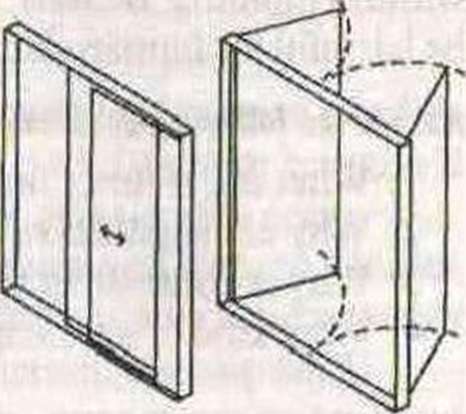
7. Doors
The fundamental purpose of a door is to provide access into or out of a building. Doors also serve for providing access into or out of various compartments of a building.
Doors also have the following functions. They provide:
Security;
Weather resistance;
Fire-resistance;
Thermal insulation;
Sound insulation.
As to exterior doors, they must be well- designed and properly constructed. They must not leak air, wind, heat and water.
Answer the following questions. Try to consult the article as little as possible.
What are the fundamental purposes of a door?
What are their functions?
What kinds of resistance do they provide?
What kinds of insulation do they provide?
What mustn't the exterior doors leak?
8. Francois hennebique (1842-1921), reinforced concrete pioneer 1
F. Hennebique was born in France, in the family of a farmer. Already in his childhood he became fond of natural sciences and spent his free time on reading books on natural sciences.
At the age of 18 he became an apprentice of a builder and at the same time he continued his studies of theoretical technology. At the age of 25 years Hennebique specialized in restoring churches. He travelled all over the country (France) visiting cathedrals and examining their architecture and construction.
As years passed by, lie grew interested in railway works, including bridges and viaducts.
In 1844 he designed a house for a client and, to prevent damage by fire, combined good-quality steel (as opposed to iron) with concrete in compression. In this way he realized a new idea to put steel rods in the bottom of the slab in order to prevent any damage by fire. That building with its fire resistance guarantee was completed in 1880 and stood until destroyed during the First World Wfcr.
From that time on, F. Hennebique concentrated on the development and production of reinforced concrete constructions.
One of his reinforced concrete buildings of that time, a single-storey structure in Paris, had a concrete and glass roof.
His first concrete bridge was designed and constructed in 1899. Soon his name was associated with bridges all over the world, and, by 1906, he had designed 700 (with an average of over 100 a year), since the construction of the first reinforced concrete bridge. And by 1920 he had completed 3600 bridges (!).
F. Hennebique travelled all over Europe setting up his agencies and firms. Contracts with his numerous clients had doubled each year and by 1917 his firms had completed 35000 contracts. He also constructed reservoirs and water works and by that time there were 7500 of them completed. As to his railway works (total 300), they included offices fig, p. Fran^iiHennebique and hotels in Cairo. He built the enormous (1842-1921)
sports stadium in Turin covering an area of 11 ha, with places for 70000 spectators.
In Britain the first building in reinforced concrete was a six-storey concrete framed construction. As to the 15-storey Royal Liver Building in Liverpool, it was built in 1909 and up till now is considered to be Britain's first "skyscraper". Built with an entirely reinforced concrete frame, the building has become a symbol of the city. F. Hennebique left behind a great number of very fine and famous buildings and structures. But that is not all! Maybe his greatest contribution to the industry was the fact that he attracted and trained a great number of talented engineers who were to go on and develop their own practices. Many of them became consulting engineers working not only with reinforced concrete. They dealt also with many fields of general engineering.
Answer the questions.
Did you find anything new for you in the article? What is it?
9. NEW DEICER USED TO PROTECT BRIDGES
A new anti-icer liquid is successfully used for melting snow and ice on roadways and bridges. The liquid looks like molasses in colour but is less viscous. It can be used alone or mixed with other anti-icer agents. It can also be added to salt/grit mixtures and melts snow on roadways. The advantages of the liquid are ease of use, effectiveness and relatively low cost. The liquid has been tested and compared with other agents. Laboratory and field tests indicate that the product melts snow and ice faster and at lower temperatures than other ice control agents. The product was also found to produce a longer effect than magnesium chloride solution widely used as deicer. It turned out to be reactive during the next snowfall.
If the liquid is mixed with salt, it can reduce corrosion of highway infrastructure. It is found to cause less corrosion than pure water.
Answer the questions.
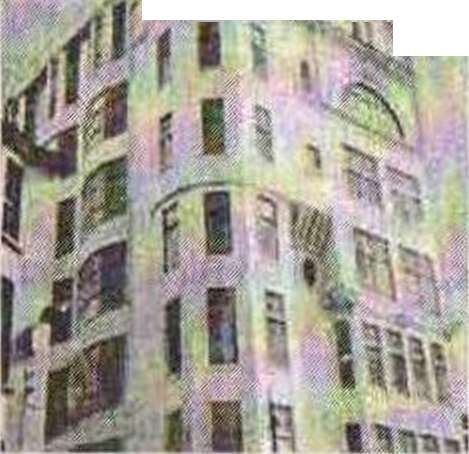
mm/\
Fig.
10.
Lion
Chambers -
first
reinforced concrete multistorey building in Glasgow
10. THERMAL INSULATION AND VAPOR RETARDER
The insulation of a building is its extremely important feature. It keeps a building comfortable for life; it helps make buildings cooler in summer and warmer in winter by retarding the passage of heat through the exterior surfaces of the building. It helps keep the people living in the building more comfortable by raising the temperatures of the interior surfaces of the building. It also reduces the energy consumption of the building for heating and cooling. The most important types of thermal insulating materials are the following: glass, wool, treated cellulose, polyurcthane, polystyrene foam, glass fibers and some others.
Answer the questions.
Why is insulation of a building so important?
I n what way does it make the people living in the building more comfortable?
Does it reduce the energy consumption?
What are the highly popular types of thermal insulating materials?
Read and translate the article. Use a professional dictionary. Describe the diagrams of a one-pipe system and a two-pipe system.
11. STEAM HEAT
From campfires to fuel cells, man has discovered many ways to keep warm. One method is heating with steam. A vessel fueled by coal, oil, gas, or wood boils water and produces steam. The steam travels through piping to radiators and gives off heat. There are tens of thousands of such systems in use nowadays. Because many of such systems have been altered over the years, it is necessary for today's technicians to have a working knowledge of steam heating systems. There follow some of the basic components of a steam heating system.
The Boiler
Fueled by various sources such as gas, wood, oil, or coal, the boiler fires automatically, boils water, and produces steam. System controls maintain pressure and also protect the boiler.
Piping Arrangements
There are two different types of piping arrangements commonly found today in steam heating systems - one-pipe and two-pipe systems.
A one-pipe system uses a single pipe to both supply steam to radiators and return condensate to the boiler. (See Fig. 11.)
Two-pipe systems incorporate one pipe to supply steam to radiators and a separate pipe to return condensate to the boiler. (See Fig. 12.)
Fig.
11. A one-pipe system Fig. J 2.
A
two-pipe system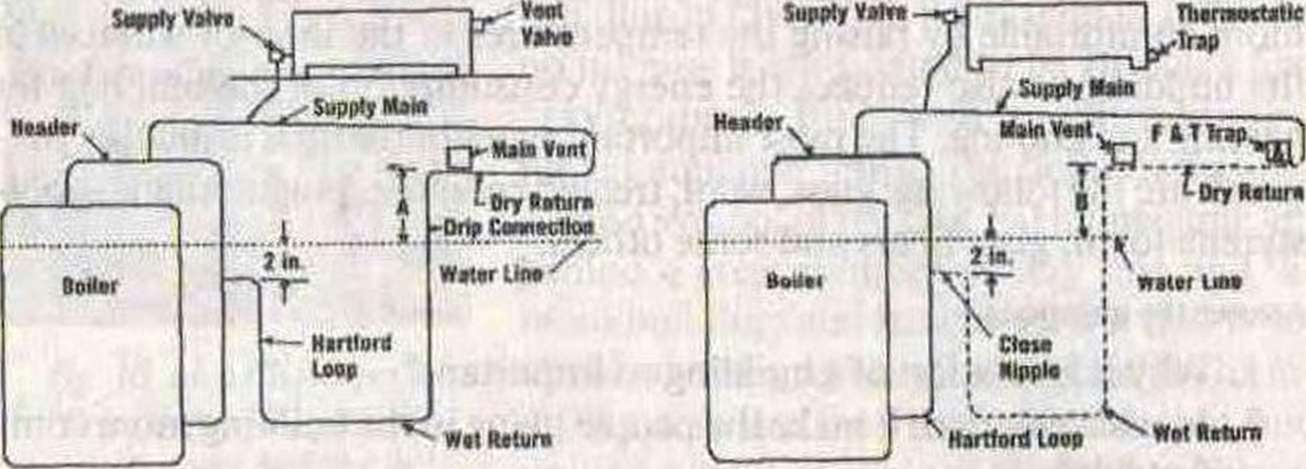
Piping within the boiler piping arrangement is designated by name and serves specific functions. The following are a few common components:
Header- The horizontal pipe located above the boiler that connects vertical pipe(s) from the boiler to the main supply line.
Steam supply main - Connects to the header and delivers steam via branch run-outs to the radiators. It will also deliver condensate to the drip connection in a one-pipe system.
Drip connection - The pipe that connects the steam main to the return. Located at the end ofthe main, this vertical pipe drips condensate into the return piping.
Dry return - The section of return piping located above the water line in the boiler.
Wet return - The section of return piping located below the water line in the boiler. This piping should always be full of water in the form of condensate returning to the boiler
Hartford loop - A piping arrangement designed to prevent water from pouring out of the boiler.
Equalizer and header drip connection - Piping that exits the header and connects back into the return inlet to the boiler. Its purpose is to keep an equal amount of pressure on the return, preventing boiler pressure from forcing water back up the return line.
Steam Vfents
For a steam system to work properly, air must be eliminated from the piping and radiators. This process is accomplished with vent valves.
Radiator vents are located on the opposite side of where steam enters a radiator in a one-pipe system.
Main steam vents are located on the end of the main supply line in one- and two-pipe systems; they are located in vertical risers in two-pipe systems.
Traps
The trap's job is to separate steam from condensate. The following are two of the more common types of traps found today:
Thermostatic radiator trap - Located on the bottom of the radiator in a two-pipe system, this trap, actuated by steam pressure, keeps steam in the radiator while regulating the discharge of air and condensate.
Float and thermostatic trap — Typically located at the end of a supply main in a two-pipe gravity return system, this trap prevents steam from reaching the dry return piping. The thermostat in the trap will allow the discharge of air until it senses steam. Condensate is discharged and regulated by way of the float. The two functions act independently of each other.
Controls
Low-water cutoff- A safety control that monitors the water level in a boiler via an electronic probe or float. If the water drops below a predetermined safe operating level, the control turns off the burner and prevents the boiler from overheating.
Automatic water feeder - This safety automatically adds water to the boiler if the water drops below a safe operating level.
Read, translate the articles and enjoy the pictures of construction masterpieces.
1. Wood
It is a well-known fact that in prehistoric times the great part of the world's land surface was covered with forests. In places, where trees grew, man used wood to build homes for himself and his dependents.
The durability of wood and its use can be demonstrated, for example, by the existence of such buildings as churches of Scandinavia.
In Russia, where sub-zero temperatures are quite common, wood has been widely used for both houses and churches because of its property of i nsu-
Iniroducrory Part
Translate into Russian die following a) words and b) combinations. .Mind the prefixes.
disadjust, interaction,outside,displaccable, discontinue, overbuild,overload, preselect, depression, displacement, overproduction, reactivate, remove, reconstruction, unequal, unfinished, deprivatisation
eoo|)cralive movement; disarranged details; discontinuous load; interchangeable parts; overburned material; preheated air, underfircd clay; unstressed and prestresscd plates; undamaged coverings; underestimated difficulties, unrealistic and unattainable project; precracking condition
Read the following words. What are their prefixes, stems, suffixes? nailablc, workability, irregular, inequality, supercharge, available, underproduction, interrelation, unbuildable, typically, environment, existence, airless, workmanship, various, unsuitable, owner, redesign, accountability, oversimplification, mechanize, devalvation
Умение «с первого взгляда» понять, какой частью речи является слово, помогает в определении членов предложения - подлежащего, сказуемого, дополнения, обстоятельства. Это умение также помогает выявить в словосочетании основное слово. По составу различают: 1) простые слова, 2) производные и 3) сложные.
Простые слова состоят из одного корня, например: use — польза, пате - название, room - пространство, помещение, комната, only — только.
В производных словах, помимо корня, имеются суффиксы и/ или приставки: useful — полезный, unsuccessful — безуспешный, variable — переменный.
В составе сложных слов могут быть два и более корня: airplane, stairway, place-in-situ. Отметим, что в языке строительства сложные слова весьма распространены!
IVaaslate into Russian the following words. Use a dictionary if necessary.
pre-design, highway, simple-shaped, waterless, mixture, limestone, Internet, workable, place, know-how, townhousc, lightweight, subsoil, supercooling, homeowners, reuse, preconstruction, displace
CONVERSION • КОНВЕРСИЯ
16
Introductory Part
Wuer is necessary for life. — Вода необходима для жизни.
Water the flower-bed, please. - ПолсЙ(те), пожалуйста, клумбу.
Wfcter mills served a source of energy. - Водяные мельницы служили источником энергии.
water-supply system - система водоснабжения water-proof watch — водонепроницаемые часы
Значения подобных слов и их перевод на русский язык зависят от того, каким членом предложения они являются. Они могут быть подлежащим, сказуемым (или его частью), определением, обстоятельством. Функцию слова помогает определить твердый порядок слов в английском предложении и контекст.
17. Look up the meanings of the words in a dictionary if necessary. How are they translated in the sentences below? Mind the word order.
Concrete was combined with steel in ordcrto prevent damage by fire.
The highway was badly damaged by the storm.
The house is heated by steam power.
This crane houses a 10-ton load.
"Water only this part of the floor, please."
"Name the places of the future construction, please."
In what way should these figures be positioned?
What is the position of these data in the text?
The device should be re-fuelled with light fuel.
The light went out in the whole house.
The instrument is foot-controlled by a pedal.
The amount of power used in the world in a year amounts to 12,000 million tons of equivalent fuel.
The new engine will have a great number of uses.
After the metal was heated it changed its colour to a red heat.
17
The fuel-and-energy balance is important for both heavy and light industry.
NUMERALS ♦
ЧИСЛИТЕЛЬНЫЕ
0
zero f'zixao], |oul
6 six
|siksl
1 one
fwAn]
7
seven I'sevn]
2 two
[tu:]
8
eight leitl
3
three I9ri:j
nine fnamj
ten ftenj
5
five [faiv]
2 _
<iM9
lation against cold. Many old Russian churches are wooden, even to the onion-shaped domes with which they are decorated (See Fig. 13).
Russia. Kolomenskoye
Kolomenskoye, a gem ofold Russian construction and architecture, was an estate of the tsars. It is situated on the tall banks ofthe Moskva River. It is the site of the famous church of the Ascension of Christ (1532). Its height, beauty, and brightness have delighted many generations. Some other 16th-and 17th-century buildings still exist in Kolomenskoye. A museum has been established with valuable collections of Russian tiles, carvings in wood and examples of the ancient Russian timber houses, including the little house of Peter I moved from its original site in Archangelsk. (See Fig. 14.)
Sweden. Stockholm. The Royal Palace
The Royal Palace in Stockholm is one ofthe largest and most living palaces in Europe. It houses a historical collection of European and Swedish art from the Middle Ages through to the present day. Built in the Italian baroque style, the palace was completed in 1754.
The Royal Palace is the residence of His Majesty the King of Sweden. It is-also the place of official functions and receptions. In between official receptions, the Royal Apartments are open to the general public. (See Fig. 15.)
4. Sweden. Malmo
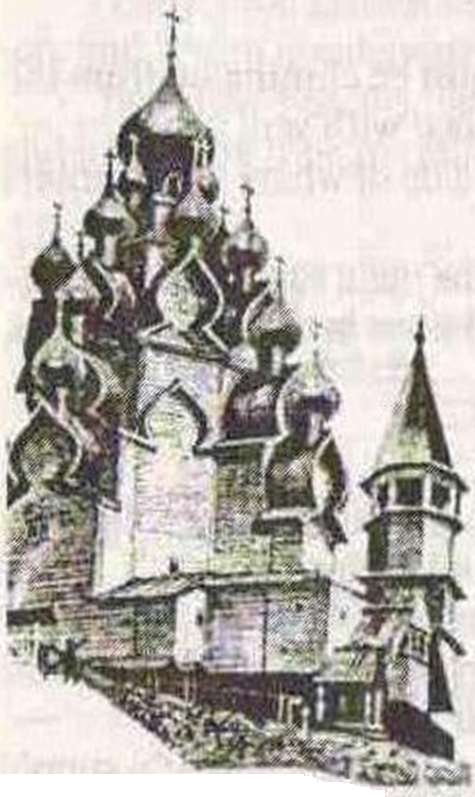
Fig.
13.
A
wooden church in Russia with on ion-shaped domes

5. Holland. Amsterdam.
The Open-Air Museum.
The Timber Sawing Mill
Amsterdam is the capital of Holland. (But, st range as it is, the residence of t he gov- ernment is De Haage.)
It is also interesting to note that the name " Holland" once meant 'Houtland1 - 'Woodland'!
Water and wind are the elements that are always associated with Holland. In Fig. 17 you sec the Open-air Museum of Amsterdam. Around the seventeenth and eighteenth centuries there were hundreds of windmills there. They served the source of enenjy for numerous industrial activities in the area. When new sources of energy appeared, many windmills thai were a typical feature of the area, disappeared. But the mill you see in Fig. 18 is still operating and has been sawing timber since 1869.
6. Plastics
Fig.
15.
Пw
Royal Palace. Stockholm
Fig.
16.
Ciry
Theatre with movable walls
Fig.
17.
The
Open-Air Museum
Fig.
18.
Timber
sawing mill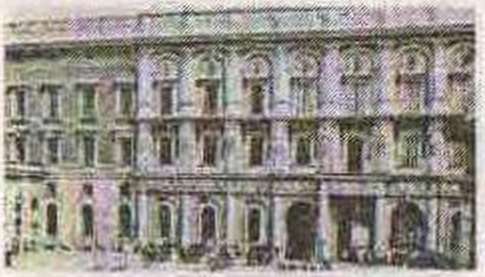
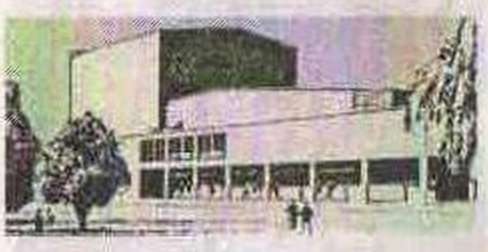
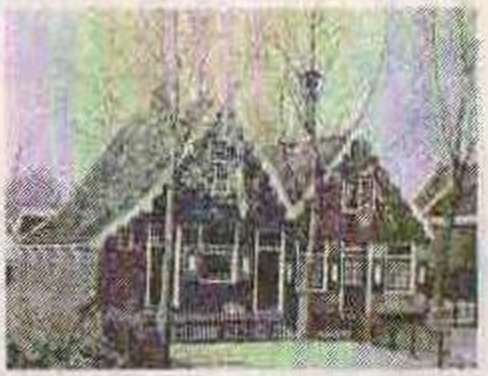
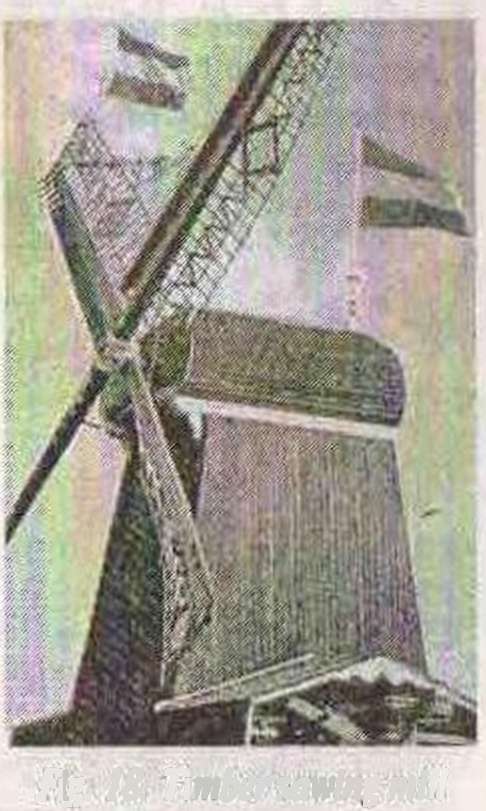
The panels of the domes are made of polystyrene and polyurethane foam and are protected by glass cloth cemented to the fume panels with epoxy resin. Some other dome structures are made from panels of thin sheets of reinforced fibreglass. Up till that time fibre- glass was familiar as a roofing material. Now it is becoming more and more popular in the manufacture of panels. The methods by which plastic shapes are produced has led to a new approach to constructional and architectural forms,
7. Canada. "Habitat"
Fig.
19.
Notre-Dame.
Paris
Fig.
20.
An
entirely new concept of industrialised housing called "Habitat"
constructed
experimentally at Expo '67.
Canada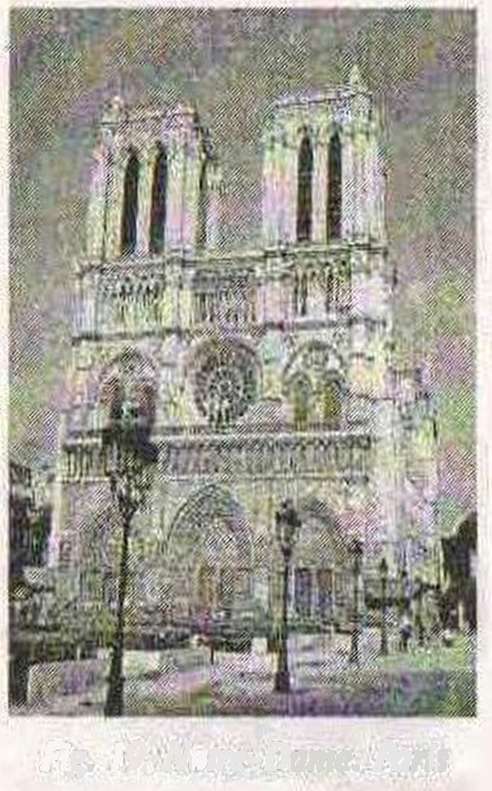
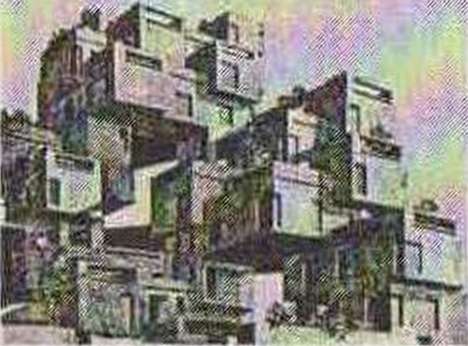
по
с
&
—»
if
3■
сл
о
Основа |
Infinitive |
Past Tense |
Participle II |
Participle I |
Перевод |
|||
know |
to know |
[пэо] |
knew |
[nju:] |
known |
[пэоп] |
knowing |
знать |
lead |
to lead |
[Ш] |
led |
[led] |
led |
[led] |
leading |
вести |
leave |
to leave |
Ы |
left |
[left] |
left |
[left] |
leaving |
оставлять |
let |
to let |
[let] |
let |
[let] |
let |
[let] |
letting |
позволять |
lie |
to lie |
[lax] |
lay |
[lei] |
lain |
[lein] |
lying |
лежать |
loose |
to loose |
IM |
lost |
[Inst] |
lost |
Ы |
losing |
терять |
make |
to make |
tmeik] |
made |
[meidl |
made |
[meid] |
making |
делать, заставлять |
mean |
to mean |
[mi:n] |
meant |
[ment] |
meant |
[ment] |
meaning |
значить |
meet |
to meet |
[mi*] |
met |
[met] |
met |
[met] |
meeting |
встречать |
put |
to put |
[pot] |
put |
[pot] |
put |
[pot] |
putting |
класть |
read |
to read |
[ri:d] |
read |
[red] |
read |
[red] |
reading |
читать |
ride |
to ride |
[raid] |
rode |
[raodl |
ridden |
['ridnl |
riding |
ехать |
ring |
to ring |
[rir)l |
rang |
[гэед] |
rung |
[глд] |
ringing |
звонить, звенеть |
rise |
to rise |
[raiz] |
rose |
[raoz] |
risen |
Prizn] |
rising |
подниматься |
run |
to run |
[глп] |
ran |
[raen] |
run |
[глп] |
running |
бежать, управлять |
say |
to say |
[sei] |
said |
[sed] |
said |
[sedl |
saying |
говорить, сказать |
• see |
to see |
fsi:l |
saw |
[so:] |
seen |
[si:n] |
seeing |
видеть |
|
|
|
|
|||||
sell |
to sell |
[sei] |
sold |
|s9oldl |
sold |
[soold] |
selling |
продавать |
send |
to send |
[send! |
sent |
[sent] |
sent |
(sent] |
sending |
посылать |
о\ сг
3
Ос с_
аз
сг
|
Infinitive |
Past Tense |
Participle II |
Participle I |
Перевод |
|||
|
|
|
|
|
|
|
|
|
shake |
to shake |
[feikj |
shook |
[Juki |
shaken |
Pjeikani |
shaking |
трясти |
shine |
to shine |
[Jain] |
shone |
[Jt)n] |
shone |
Щ |
shining |
светить |
shoot |
to shoot |
[Ju:t] |
shot |
[Jot] |
shot |
M |
shooting |
стрелять |
show |
to show |
Ы |
showed |
[Jaod] |
shown |
[JaunI |
showing |
показывать |
shut |
to shut |
M |
shut |
fjAt] |
shut |
[jAtl |
shutting |
закрывать |
sit |
to sit |
[sit] |
sat |
[saet] |
sat |
[saet] |
sitting |
сидеть |
speak |
to speak |
[spi:k] |
spoke |
[spauk] |
spoken |
f'spaokan] |
speaking |
говорить |
spend |
to spend |
[spend! |
spent |
[spent] |
spent |
[spent] |
spending |
тратить |
stand |
to stand |
[staend] |
stood |
[stud] |
stood |
[stud] |
standing |
стоять |
steal |
to steal |
im |
stole |
[staul] |
stolen |
['staolanl |
stealing |
украсть |
take |
to take |
fteik] |
took |
Г1ок1 |
taken |
pteikan] |
taking |
взять, брать |
teach |
to teach |
[ti:tfl |
taught |
M |
taught |
fto:t] |
teaching |
учить |
tell _ ! |
to tell |
[tel] |
told |
[twld] |
told |
[taold] |
telling |
сказать, рассказать |
think |
to think |
leigkl |
thought |
[Sort] |
thought |
[Sort] |
thinking |
думать |
throw |
to throw |
[9гэи| |
threw |
[9ru:| |
thrown |
[Oraon] |
throwing |
бросать |
wake |
to wake |
[weik] |
woke |
[wauk] |
woken |
pwaukan] |
waking |
просыпаться, будить |
win |
to win |
[win] |
won |
[won] |
won |
[wot] |
winning |
победить |
write |
to write |
[rait] |
wrote |
[rsot] |
written |
I'ntn] |
writing |
писать |
|
|
|
|
|
|
|||
11 eleven |
[l'levn] |
30 thirty |
[toi] |
12 twelve |
(twelvj |
40 forty |
['forti] |
13 thirteen |
Ptertfcnj |
50 fifty |
[Ш] |
14 fourteen |
['iVtrn] |
60 sixty |
['siksti] |
15 fifteen |
pfifti:nj |
70 seventy |
I'sevnti] I'erti] |
16 sixteen |
fl 1 li; .. 1 |
||
[siksii:n] |
80 eighty |
||
17 seventeen |
fsevn'tun] |
90 ninety |
I'namti] |
18 eighteen |
fei'ti:n] |
100 hundred |
['iundnad] |
19 nineteen |
[*nain'ti:n] |
1000 thousand |
f'QauzandJ |
20 twenty |
[ItwentiJ |
|
|
18
Introductory Ра
27 twenty-seven
51 fifty-one
118 one hundred and eighteen
365 three hundred and sixty-five
1,674 one thousand six hundred and seventy-four
5,803 five thousand eight hundred and three
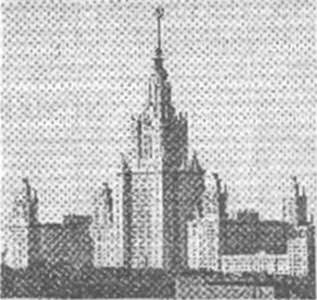
18. Read the article out loud. Translate it using a dictionary.
Moscow University
Construction ofthe new University complex was begun in 1949, and the first students entered the new auditoriums ofthe Science Palace on September 1, 1953. The University grounds occupy 415 acres. The main building is 780 ft high. The 27 blocks and 10 buildings ofthe University complex contain over a thousand excellently equipped laboratories, 148 auditoriums, museums, club premises with a v.. : :.■••;: hall seating 800, an assembly hall for 1,500, а Ш Ш&Ш
fundamental library of 1,500,000 volumes, reading rooms, hostels and Hats for students and instructors. To look in at all auditoriums and laboratories of the Science Palace one would have to walk 145 kilometres, and a visit to its 45,000 premises would take a month. The splendid complex was designed by architects L. Rudnev, S. Chcmyshov, P. Abrosiinov and A. Khryakov, and built under the direction of engineer V. Nasonov. Fig. 1. Moscow University
Introductory Part
SIMPLE AND DECIMAL FRACTIONS • ПРОСТЫЕ И ДЕСЯТИЧНЫЕ ДРОБИ
В простых дробях числитель выражается количественным числительным, а знаменатель — порядковым. Если числитель больше единицы, то знаменатель имеет окончание -s: two fifths — две пятых. I! смешанном числе целое число читается как количественные числительные, а дробь присоединяется при помощи союза and: five and two fifths - пять и две пятых.
В десятичных дробях нуль произносится zero или о, за ним следует слово point (точка) и затем дробь: о point five ноль целых и пять десятых. Между целым числом и десятичной дробью в английском языке ставится точка, а не запятая как в русском языке!
Read the following numerals out loud.
200.22 ft 55 miles (90 km) 320,000 miles (515,000 km)
40,000 volts 220,000-volt line 3 million miles
75 miles (120 km) 75.45 million m3 4.8 million km
132,000-volt line 345,000 volts 5.05 in
Read the extract out loud. IVanslate the extract using a dictionary.
The project, which is expected to cost more than $200 million to complete, includes excavation of more than 35 million cu yd (26.8 million m') of material in cuts as deep as 600 ft (183 m), more than 100,000ft (30,480 m) of drainage pipe, and 200 ft (61 m) tall embankment fills. Engineers must dispose of more than 8 million cu yd (6.1 million m3) of waste material.
The larger part of the route involves more than 25 million cu yd (19.1 million mJ) of excavated material, approximately 79,000 linear ft (24.080 m) of drainage pipe, 470 ft (143 m) deep cuts through mountains, and 200 ft (61 m) high embankment fills.
Note: m3 - to the third power
Read the following examples.
2/s; 1-V4; 7507, 5.2 million m3 25,075 in 95.1 m
100.75 thousand m2 '/4; 45%; 105% 634.003 6,000 ft
"INTERNATIONAL" WORDS • «МЕЖДУНАРОДНЫЕ» СЛОВА
19
Introductory Part
щи ми русскими словами. Например: meeting митинг, to inform - сообщать, program — программа, basis - основа и т.п. 11ри этом, однако, надо иметь в виду, что есть слова, которые требукп иного перевода и не соответствуют по значению русскому слову. 11аиример ргоМеш — задана, limit — граница, engineer - может означать техник, механик, слесарь и др., industry - трудолюбие и т.д.
Имеются и слова, которые можно понять без словаря, хотя в русский язык они перешли лишь в одном из присущих им значений. К примеру, revolution имеет такие значения, как круговое вращение, полный оборот, смена времен года. В русском же языке это слово употребляется лишь в значении коренной перелом .революции. Слово экспансия в русском означает захват чужих территорий. В английском же оно означает увеличение, расширение, expansion of construction р<л ши/н'ние строительства (а не его захват\). К числу подобных слов относятся affair, occupation, reduction и множество других. Переводу таких слов может помочь контекст и их окружение; так, master segment означает главный сегмент; commercial application—коммерческое применение (а не приложение). О значении некоторых слов можно догадаться, сопоставив их с подобными, в какой-то их части, русскими словами. Так, глагол to consist of состоять из сопоставим со словом консистенция. equal равный со словом эквивалент, to provide обеспечивать — со словом провишя, quality качество — со словом квалификация. Известно, что словаре ми с гатья дает обычно ряд значений одного слова. Но не всегда среди них имеется нужный вариант! Например, в сочетании product development слово development надо перевести как выпуск, а все выражение как выпуск продукции (а не развитие).
Рекомендуем выработать в себе привычку догадки о значении слова по составляющим его частям. Укажем также на необходимость работать с международными словами, в частности, над их произношением: c)cle ['saiklj - цикл, mastic [amaestik| - мастика и т.п.
Следует иметь в виду, что в современной литературе по разным отраслям строительства международная лексика представлена чрезвычайно широко.
20
ESSENTIAL COURSE ОСНОВНОЙ КУРС
Unit One
WHY DO PEOPLE BUILD?
Parti
Master the key terms and head words.
accommodation — приспособление
air [еэ| - воздух
shelter — убежище
site - участок, место
waste - отбросы
to build - строить
to dispose - избавляться от
to provide - обеспечивать
to take place — иметь место
to use [ju:z| - использовать use [jus] — использование indoors adv. — в помещении outdoors adv. — на воздухе, на
улице because conj. - так как because of prep, — из-за in order to — для того чтобы both ... and - как... так и
pre- pref. — до, заранее
preheating - предварительное нагревание
prehistoric — доисторический
